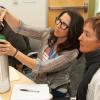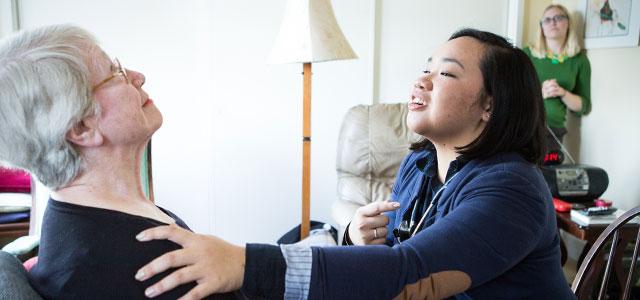
Assistant Professor Laura Wagner (far right) observes AGNP student Nhat Bui examining resident Margaret Jacobs at San Francisco’s Heritage on the Marina (photo by Elisabeth Fall).
New Partnerships Train Nurses to Work in a Patient-Centered Primary Care Environment
The concept of the patient-centered medical home (PCMH) has been around since the late 1960s, but health care reform – with its emphasis on primary care and vulnerable populations – has made the PCMH a mainstream idea. Most experts agree, however, that for the concept to effectively meet the needs of an older, often sicker, population, the primary care workforce will have to grow, and training will have to emphasize interprofessional teamwork.
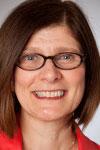 JoAnne Saxe This includes nursing schools, says JoAnne Saxe, who directs the Adult-Gerontology Nurse Practitioner (AGNP) in Primary Care master’s specialty at UC San Francisco School of Nursing. “It’s critical that we provide learners opportunities to work on interprofessional teams early in their professional development, so they can provide high-quality patient-centered care,” she says.
JoAnne Saxe This includes nursing schools, says JoAnne Saxe, who directs the Adult-Gerontology Nurse Practitioner (AGNP) in Primary Care master’s specialty at UC San Francisco School of Nursing. “It’s critical that we provide learners opportunities to work on interprofessional teams early in their professional development, so they can provide high-quality patient-centered care,” she says.
Consequently, Saxe and her colleagues have revised the School’s AGNP curriculum and garnered a series of grants that have allowed the School to partner with community-based organizations and programs to place nurse practitioner students in clinical settings where they will get hands-on training in delivering this type of interprofessional care.
While finding clinical opportunities for learners has always been difficult, identifying new opportunities for trainees to learn skills in real-world settings that reflect the rapidly changing health care environment has added to the challenge.
Saxe says, “We’re trying to develop different types of preceptor models, because it’s very difficult to find clinical placements, particularly continuity of care or primary care placements, where the learner is embedded in the clinical agency for the entire year. Given that challenge, we’re trying to pull the envelope apart and think out of the box for precepting arrangements that allow more learners to be in a clinical agency.”
Integrating Primary Care with Mental Illness Treatment in the Community
 Gerri Collins-Bride Gerri Collins-Bride, vice chair of the School’s Department of Community Health Systems, directs one of these programs, Interprofessional Primary Care Outreach for Persons with Mental Illness (IPCOM).
Gerri Collins-Bride Gerri Collins-Bride, vice chair of the School’s Department of Community Health Systems, directs one of these programs, Interprofessional Primary Care Outreach for Persons with Mental Illness (IPCOM).
She says, “I think one has to look at different models of primary care in terms of developing the workforce. It’s not going to be all traditional medical settings or community clinics. It’s going to be outreach projects; it’s going to be residential treatment-based or street work in order to reach out to some of the most marginalized populations.” The IPCOM project provides primary care services in residential mental health treatment programs in San Francisco and Napa.
Since its inception in 1995, the program has provided training opportunities for advanced practice nursing students, but a grant from the Health Resources and Services Administration (HRSA) has allowed Collins-Bride and her colleagues to expand the opportunities for students to work alongside students from other disciplines – such as pharmacy and dentistry – in teams, with the aim of improving both communication and team problem solving to enhance care for a traditionally marginalized group of patients in a medical home setting.
“For people with serious mental illness, oftentimes where they get mental health treatment is their medical home,” says Collins-Bride. It makes sense to integrate primary care at the site of their mental health home, she says, but this is a new concept that requires increased teamwork and communication skills.
To foster those skills, students work on group projects focused on primary care-related issues that benefit from the input of an interdisciplinary group. Team projects have included smoking cessation programs and aid to youth, targeted at issues of safety, sexuality and mental health. Another piece of the grant is focused on integrating notes in the electronic health record to help with discharge planning and the ongoing coordination of primary care for patients leaving residential treatment.
Two Models for Delivering Primary Care to Older People
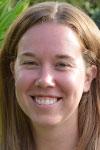 Courtney Gordon Two additional HRSA-funded programs focus on the vulnerable and growing population of older people, and they address the need to deliver patient-centered care in different ways.
Courtney Gordon Two additional HRSA-funded programs focus on the vulnerable and growing population of older people, and they address the need to deliver patient-centered care in different ways.
The UCSF Housecalls Program began in 1999, providing primary care services to frail older San Franciscans in their homes. The HRSA grant has allowed the program, originally a primarily physician-staffed service, to add two NPs and a social worker to the team beginning in 2014, and to provide AGNP students with a unique clinical learning opportunity.
In the Housecalls Program, a nurse practitioner and a student see patients in their own home for regular primary care needs and for acute problems. Often, the decisionmaking revolves around how to keep the patient at home safely.
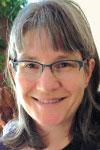 Helen Horvath “It’s a great learning experience because for most of our patients the main goal is to stay in the home and avoid hospitalizations,” says Courtney Gordon, a nurse practitioner who precepts students. “The setting really forces students to think outside the box and problem solve.” Students learn to look at patients holistically, she says, and listen closely to their needs.
Helen Horvath “It’s a great learning experience because for most of our patients the main goal is to stay in the home and avoid hospitalizations,” says Courtney Gordon, a nurse practitioner who precepts students. “The setting really forces students to think outside the box and problem solve.” Students learn to look at patients holistically, she says, and listen closely to their needs.
AGNP student Shalla Ahmed, who completed a yearlong clinical rotation with Housecalls this May, agrees. “One of the benefits is that you get to assess [patients] in their own environment and see their living situation.” That’s a big benefit in delivering patient-centered care, she adds, because it allows you to form a relationship in which you observe their priorities and their difficulties firsthand.
Helen Horvath, assistant clinical professor in the AGNP program and preceptor in the Housecalls Program, adds that the Housecalls model also requires extra focus on communication because the team isn’t located at the same place. There are no immediate “hallway consults.” She says, “There’s an extra layer of coordination and communication that has to take place. It’s good for students to see how that works, and through this grant, we’ve been able to facilitate some improved communication structures for the team.”
Another HRSA-funded training program that focuses on preparing NPs to provide primary care to older people under a different patient-centered model is housed at San Francisco’s Heritage on the Marina, a not-for-profit residential community that offers a continuum of care for its residents. Last August, Laura Wagner, assistant professor in the Department of Community Health Systems, began precepting a group of four first-year AGNP students who did clinical rotations at Heritage. As with Housecalls, the setting gives the students the opportunity to spend more time with patients than they would if they were working in a typically fast-paced primary care clinic.
 AGNP student Victoria Flores with Heritage on the Marina resident Father John K. Ring (photo by Elisabeth Fall) In particular, it allows them to hone their skills around in-depth interactions with patients, says Wagner. “I give the students as much time as they want. I tell them, ‘You’ll never conduct an H & P [history and physical exam] this way again, and this is your opportunity to do it in this much depth.’”
AGNP student Victoria Flores with Heritage on the Marina resident Father John K. Ring (photo by Elisabeth Fall) In particular, it allows them to hone their skills around in-depth interactions with patients, says Wagner. “I give the students as much time as they want. I tell them, ‘You’ll never conduct an H & P [history and physical exam] this way again, and this is your opportunity to do it in this much depth.’”
Wagner concedes that Heritage on the Marina, as a well-resourced facility, is not a typical setting, but it is valuable in the example it sets for helping people age successfully. “I want [students] to aspire to make anyplace they’re working a great, high-quality place,” she says. She cites a student who was able to do a counseling session with a resident who had hoarding issues, and others who helped residents manage grief; both are time-consuming activities that address relatively common problems that in a more typical primary care clinic setting may be, at best, referred for future treatment or, at worst, overlooked entirely. Such skills might be taught in a classroom, but students seldom have adequate opportunity to practice them during busy clinical rotations – and they are precisely the kinds of skills a high-quality patient-centered primary care practice demands of its clinicians.
VA Center of Excellence Focuses on Interprofessional Teams to Care for Veterans
The San Francisco VA Medical Center is home to one of five Centers of Excellence in Primary Care Education. The center, known as EdPACT (Education in Patient Aligned Care Teams), focuses on training clinicians with an emphasis on interprofessional education. Thanks to a five-year grant from the VA’s Office of Academic Affiliations, EdPACT trains second-year NP students and medical residents together, alongside pharmacy, psychology, registered dietician and social worker trainees, in a medical home model. Each team has its own panel of patients, and they spend an entire year with them. Each NP trainee pairs with two second-year medical residents, supported by an RN, an LVN and a clerk.
 Terry Keene It’s an unusual setup, says nurse practitioner Terry Keene, co-director of the center, but one that lends itself particularly well to meeting the needs of the VA’s patients. “These are very complex patients. They have a lot of chronic disease comingled with psychosocial issues,” she says. Daily huddles allow each team to bring challenges to the multidisciplinary group.
Terry Keene It’s an unusual setup, says nurse practitioner Terry Keene, co-director of the center, but one that lends itself particularly well to meeting the needs of the VA’s patients. “These are very complex patients. They have a lot of chronic disease comingled with psychosocial issues,” she says. Daily huddles allow each team to bring challenges to the multidisciplinary group.
For example, says Keene, an NP trainee may have a patient who she thinks may have untreated post-traumatic stress disorder (PTSD). “She can huddle with a psychology fellow, and they can come up with a plan, or have a co-visit, or do a warm handoff that day.” Not only does this type of collaboration help expand knowledge and understanding, but equally important, says Keene, it helps establish role clarity and foster good communication. “I think the approach will move the understanding of roles forward and maybe even help with public policy surrounding NP scope of practice,” she says. “The new generation of MDs and NPs will work much more collaboratively and collegially.”
Programs like IPCOM, Housecalls, Heritage on the Marina and EdPACT deliver on the promise of the PCMH by forging real partnerships among patients, providers and organizations. They also provide flexible models for training providers. Saxe is hopeful that these successes will pave the way for more opportunities. “Now that we’ve done this, we’re finding more people to partner with. We’re finding some synergy, and it’s very exciting.”


